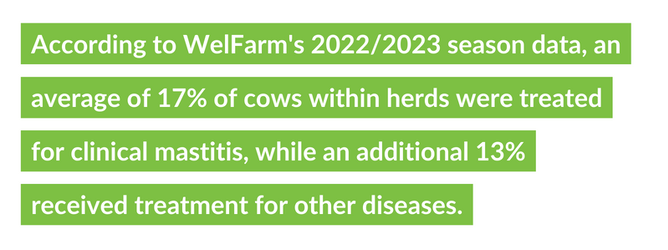Considerable benefits arise from reducing the number of red cows, including saved time and decreased milk contamination. FMG reports that over 60% of their contamination claims are linked to antibiotics, emphasising the urgent need to address this issue. The solution lies in minimizing antimicrobial (antibiotic) usage to combat antimicrobial resistance (AMR).
World Antimicrobial Awareness Week, held from November 18th to 24th, is an initiative driven by the World Health Organisation. Its primary objective is to encourage action against AMR to prevent the escalation and widespread transmission of drug-resistant infections. And it is a good time to look at how antimicrobials are used on your farm.
These figures, based on drug sales from vet clinics, indicate that farmers spend considerable time and resources on managing sick cows.
Reducing the need
Reducing the need for antibiotics involves using them prudently and focusing on preventive measures. Simple practices, such as effective teat spraying and minimizing teat damage, play a crucial role in preventing mastitis. Employing techniques like MaxT can mitigate the risk of over milking and improve milking efficiency.
Ensuring proper hygiene during the administration process around dry-off and making informed culling decisions are vital. Additionally, emphasising good hygiene and biosecurity practices can prevent the spread of infectious diseases and reduce the need for antibiotics. Regular monitoring of cow health and prompt disease diagnosis can facilitate early treatment, minimizing antibiotic use.
Educating farm personnel on preventive measures, hygiene practices, and biosecurity measures is instrumental in reducing disease risk and antibiotic dependence. Farmers using WelFarm with their vet can monitor drug usage and other herd health measures, comparing their data with regional and national benchmarks to devise effective strategies for minimising antibiotic usage.
By implementing these measures, farmers can promote healthier udders, increase milk production, and alleviate the burden of managing treated cows. Emphasising a proactive approach to herd health management not only reduces antibiotic usage but also saves time and resources by preventing productivity loss and the burden of managing sick animals.


